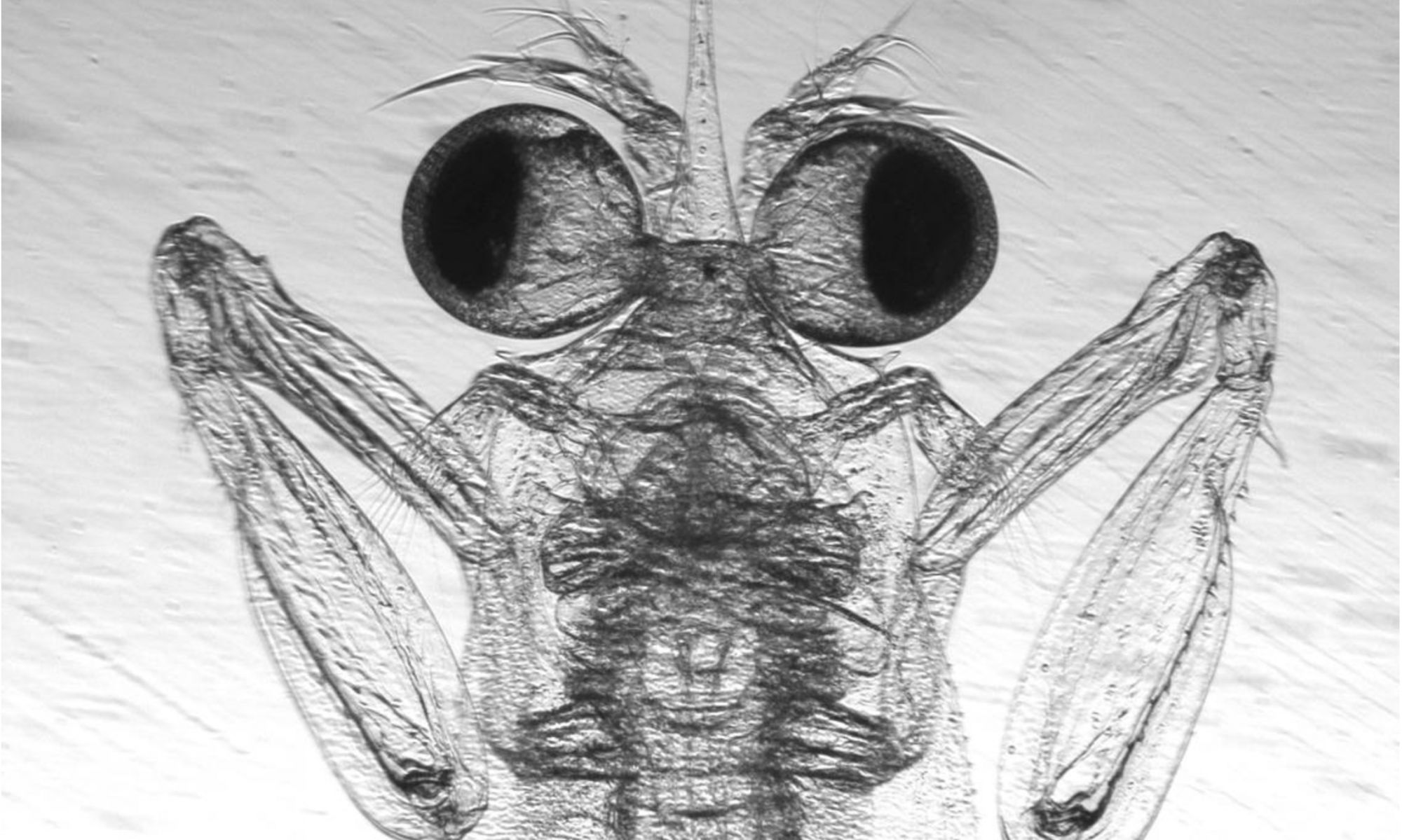Mantis shrimp (Stomatopoda) are a crustacean order comprised of over 450 species. Like praying mantises, mantis shrimp use a specialized pair of forelimbs, the raptorial appendages, to capture prey. While seminal papers in the late 1960’s laid the foundation of our understanding of the morphology and kinematics of mantis shrimp predatory strikes, it was only in the early 21st century that new imaging technologies allowed us to actually see and measure these extremely fast movements. Our first studies of the peacock mantis shrimp’s (Odontodactylus scyllarus) strike were full of surprises.
Peacock mantis shrimp use a hammer-like appendage to smash open snail shells for food. Not only did high speed imaging reveal that peacock mantis shrimp mouthparts reach maximum speeds from 12-23 m/s (in water!), but it also showed that cavitation bubbles were forming between the appendage and snail shell. We found that, as a result of the raptorial appendage’s extraordinary speed, the water cavitates (vaporizes) when the limb strikes the prey. Cavitation is a destructive phenomenon; when these vapor bubbles collapse, they essentially cause a small implosion in the water which produces heat, light and sound. For example, rapidly rotating boat propellers are often badly damaged by cavitation to the point of developing holes in the metal.
By linking high speed imaging with force sensors and acoustic sensors, we were able to show that mantis shrimp wield two types of strike forces – the first force is due to the appendage physically striking the snail shell and the second is due to the collapse of the cavitation bubble. Thus, for each predatory strike, mantis shrimp work like jack-hammers with a series of four force peaks from the impact of the first appendage, the collapse of the first cavitation bubble and then the impact of the second appendage and the collapse of the second cavitation bubble. All of this happens in less than 800 µs, with peak forces of 1500 N (over 2500 times the animal’s body weight).
These findings have offered important new insights into the physical consequences of fast movements in aquatic environments. Furthermore, they raise key questions about the evolution of fast movements and the co-opted use of cavitation. We are now completing a series of projects in which we examine the evolutionary variation of force generation and cavitation in mantis shrimp, looking across their fantastic diversity of weaponry – ranging from the peacock mantis shrimp’s hammers to the Lysiosquillina spp.’s elongate spears.
What underlies these remarkable biomechanics feats? Power amplification, muscle mechanics, elastic energy storage and linkage mechanisms, and latch-mediated spring actuation (LaMSA). Such extreme accelerations in water require substantial energy storage and release. Energetic calculations show that these movements cannot be controlled by muscle contractions alone. In other words, mantis shrimp must have a potent power amplification system. Earlier studies showed that mantis shrimp have latches which hold the appendage in place until the animal is ready to strike. More recently, we have demonstrated that mantis shrimp use a 4-bar linkage mechanism coupled with exoskeletal springs and latches to power this remarkably forceful strike. We continue to probe the evolutionary history of this system, specifically examining how variation in the underlying mechanical and muscular systems is correlated with shifts in habitat and prey use over the 250+ million year history of mantis shrimp.
For our latest papers on this topic, check out our Google Scholar, Research Gate, or Orcid pages.
